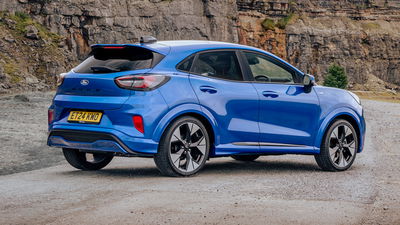The Mid-Engined Concepts That Came Before The New Mini

The ‘new’ Mini isn’t so new anymore. This week, the BMW-owned brand is celebrating the 20th anniversary of the Mini hatchback, the first example of which rolled off the production line in Oxford on 26 April 2001. Really, though, it should have arrived a lot sooner.
A follow-up to the original Mini had been talked about decades prior. This was, after all, a car that first arrived in 1959 and changed little right up until the car finally went out of production in the year 2000. BMW‘s purchase of the Rover Group in 1994 was the tipping point, but it’d still be another seven years before the R50 Mini would go into production. Before it came concepts. A lot of concepts.
In 1995, Gaydon’s Heritage Centre hosted a design showdown of sorts between design teams from Rover in the UK and BMW over in Munich. Perhaps the most interesting of all, designed by Oliver Le Grice, was ruled out of contention. The problem? It was deemed too out there by BMW - it wanted something more conventional, and thus cheaper to develop and manufacture.
The concept didn’t fit that mould at all. It had a small K-Series engine mounted under the rear seats and Hydragas suspension. Best thought of as Rover’s take on Citroen’s hydropneumatics, the system - which would eventually end up on the MG F - replaces steel springs with pressurised nitrogen spheres. Thanks to the engine layout, it was about as long as the classic Mini, yet was as roomy as the average supermini of the day.

Despite BMW’s ruling, the unusual car still had its moment in the sun at the Geneva Motor Show a couple of years later as the Spiritual, shown alongside the longer wheelbase Spiritual Two. It was more about Rover showcasing the engineering - by this point, it was already well known the next Mini would have a front transversely mounted engine driving the front wheels.
The Spiritual wasn’t the only 1995 Gaydon reject to enjoy some limelight further down the road. A car originally proposed by California-based, BMW-owned consultancy Designworks was repurposed as the Anniversary Concept Vehicle 30, or ACV 30.

The whole thing came about by accident. Rover’s marketing chief Tom Purves spotted the concept while being shown around BMW’s design office in Munich by Chris Bangle, Autocar reported at the time. He reckoned it was the ideal starting point for a celebration of the 30th anniversary of Mini’s iconic Monte Carlo Rally, despite the 1997 running of the event looming a mere four weeks away.
Regardless, Rover’s engineers were able to whip up a driveable concept in that short time frame, using the MG F sports car as a base. Yep, that made the ACV mid-engined and rear-wheel drive, contrasting it nicely from the incoming front-wheel drive production car. Further styling work was undertaken by current BMW Group styling boss Adrian van Hooydonk and Frank Stephenson]().

There was never any chance of the ACV 30 making production - that wasn’t its purpose. But it ended up being a key part of the Mini hatch’s development story, with bits and pieces of the design carried over to the R50. It received that same wraparound look for the glasshouse with the roof ‘floating’ on top, while on the inside, the dashboard bears a striking resemblance to the R50’s, not least because of the giant speedo foisted in the middle.
Not that this is surprising - the R50’s design was the work of Frank Stephenson. The car he penned was revealed at the Paris Motor Show in 2020, but in the end, it would have nothing to do with Rover. With BMW having failed to turn around the ailing brand in six costly years of ownership, it was sold to the now-infamous Phoenix Consortium along with MG, but the German company managed to keep hold of Mini.

BMW could be forgiven for tucking away these Rover-developed bits of the Mini Hatch’s history in a warehouse somewhere, never to be seen again. Instead, the company doesn’t shy away from their role in R50’s history - both were proudly displayed at the ‘The Mini Story’ exhibit at the BMW Museum from 2014 - 2016, and we’re told both are “safe and sound” in storage at Mini’s HQ in Munich.















Comments
No comments found.